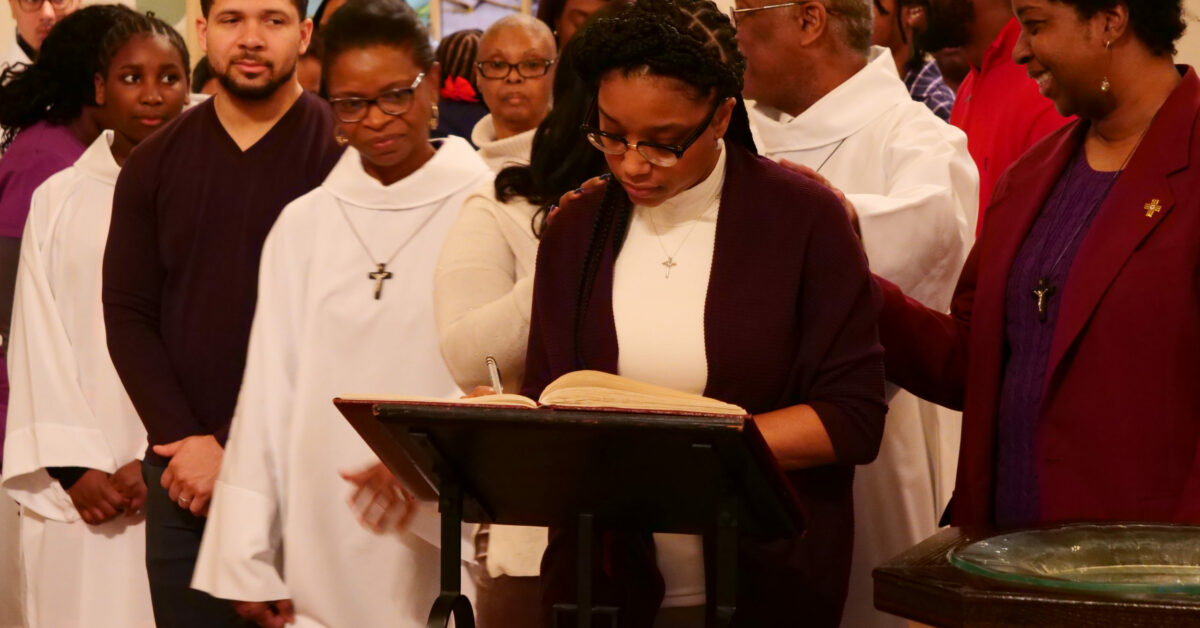A Ritual Journey: A Period of Intense Preparation
As we prepare to enter into the season of Lent we return to our ritual journey through faith formation focusing on the third period in the catechumenate: The Period of Intense Preparation (Go Make Disciples) or The Period of Purification and Enlightenment (RCIA). The turn, out of the period of the catechumenate into intense preparation, usually (but not exclusively) during Lent, focuses the catechumens (now the Elect) on spiritual preparation for baptism and incorporation into the body of Christ. This period usually begins on the First Sunday in Lent and culminates at the rites of initiation at the Easter Vigil on Holy Saturday.
Go Make Disciples (p. 108) summarizes the period with the following descriptors:
- Issue: Readiness to renounce self-centeredness and evil and to commit to Christ and his direction in daily life
- Process: Conversion. Candidates bring all of their attitudes, wounds, yearnings, and commitments into the Light of Christ
- Focus: Encountering Jesus and accepting his call to belong to the reign of God
- Sponsor’s and Congregation’s Roles: Standing with and praying for the candidates in the light of Christ; being transparent about our own need for continual conversion.
It is a period that seeks to purify desires and enlighten the elect toward the shape of the life of faith. Catechetical instruction in this period is intended to feed and support spiritual preparation. As Ronald Lewinski indicates in An Introduction to the RCIA,
The catechumens reflect on their faith and religious experience in a more intense manner. They take all that they have heard and seen, learned, prayed and shared, and they ponder it all in the depths of their hearts. Lent supports this process of interiorizing, giving it shape and direction through the Scriptures, prayers, and traditional Lenten disciplines of fasting, performing works of mercy, charity, and penance [confession and absolution for a Lutheran], and being committed to personal sacrifice (53).
Central to this spiritual preparation are the questions of faith and, through it, entry into the rule and reign of God. These questions are at the heart of the baptismal liturgy:
- Do you desire to be baptized?
- Do you renounce the devil, all his works, and all his ways?
- Do you believe in God, Father, Son, and Holy Spirit?
This period prepares the elect to answer these questions with clarity and conviction.
There are a number of liturgical rites (as outlined by the RCIA) that facilitate this spiritual self-examination. These include:
- The Rite of Election on the First Sunday in Lent
- The Scrutiny Rites including Exorcisms on the Third through Fifth Sundays in Lent
- The Presentations of the Creed and the Lord’s Prayer to the Elect, usually at weekeday celebrations of the Word following the First and Third Scrutinies
- Penitential Rites for those already baptized who are preparing for Confirmation or Affirmation of Faith
- Preparatory Rites on Holy Saturday which may include The Recitation of the Creed, the Ephphetha Rite (Opening of the Ears and Mouth for hearing and confessing the Word), and the Choosing of a Baptismal Name
Over the weeks of Lent I will lead you into these rites and how they shape the journey through the period of purification and enlightenment. Through these rites, as Lewinski observes, the Elect serve as “the primary symbol for Lent. We see in them what we ought to see happening in ourselves: a conversion that leaves us with a hunger for Eucharist and a thirst for building God’s kingdom” (54).
